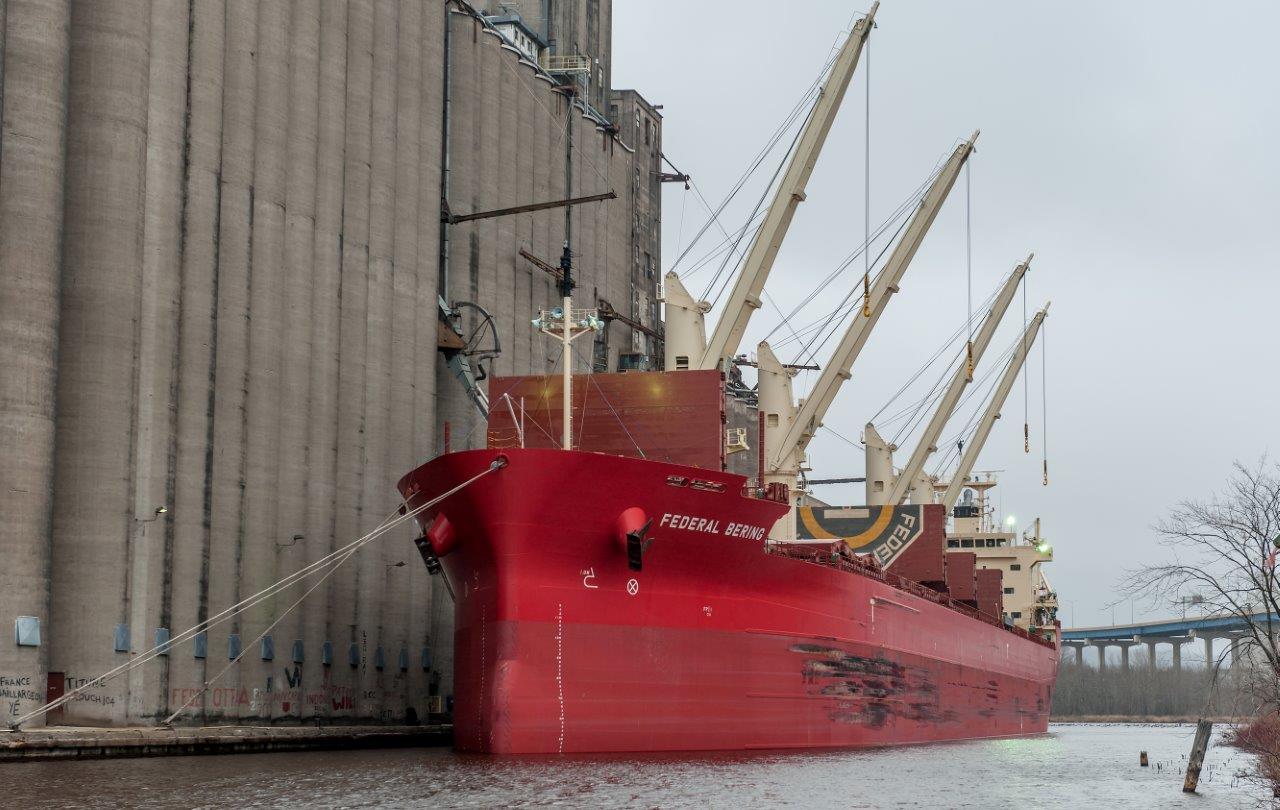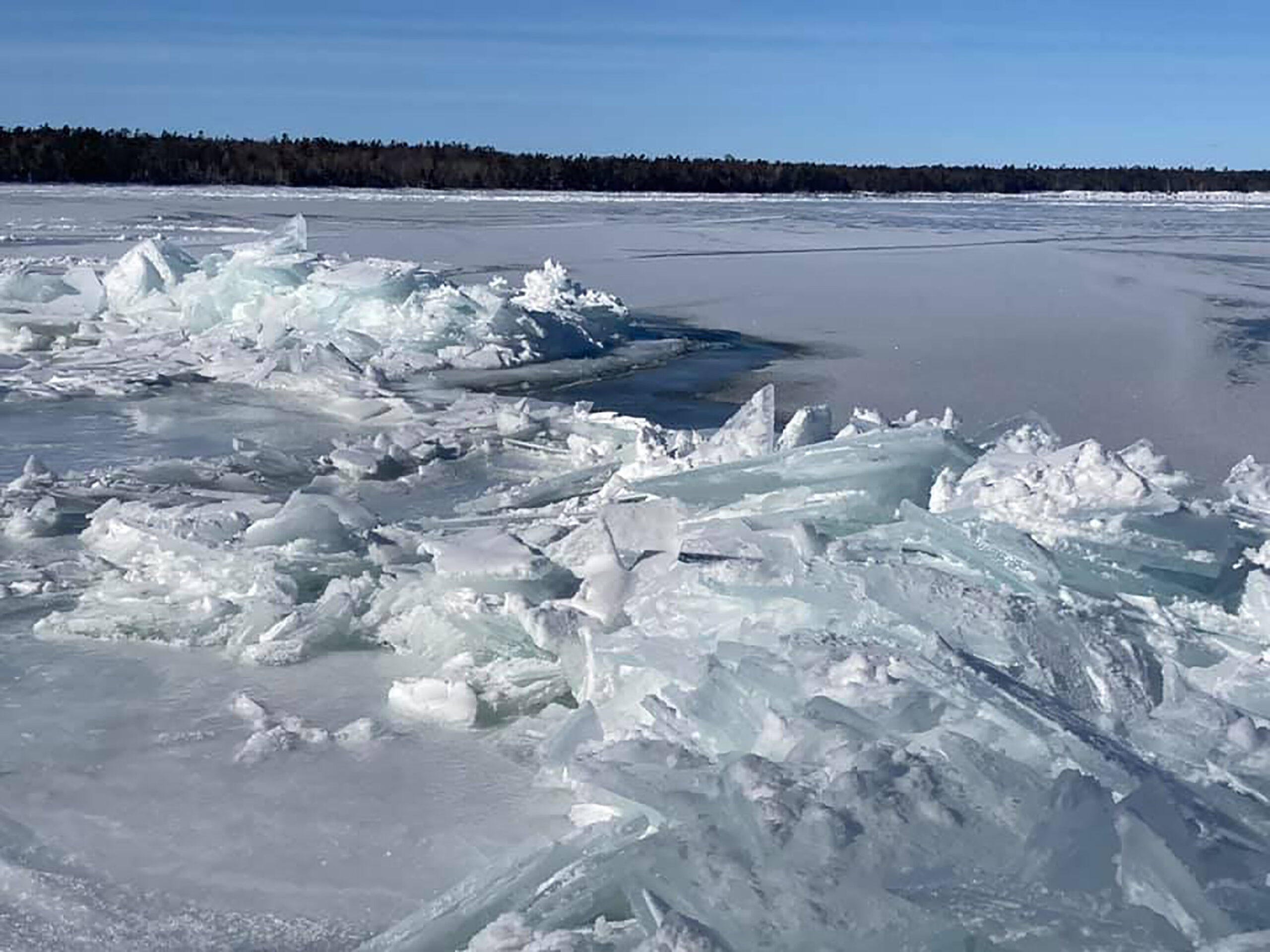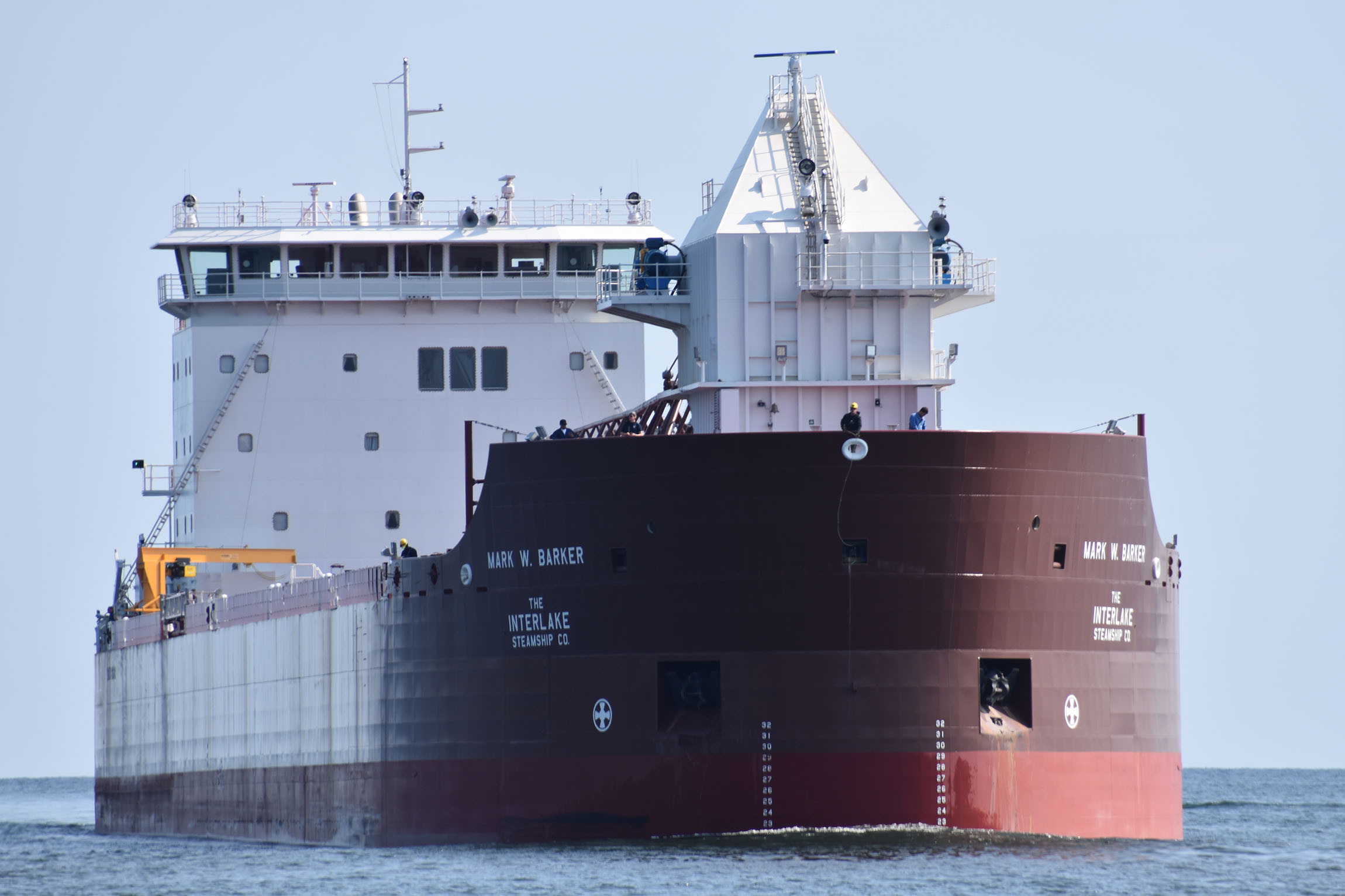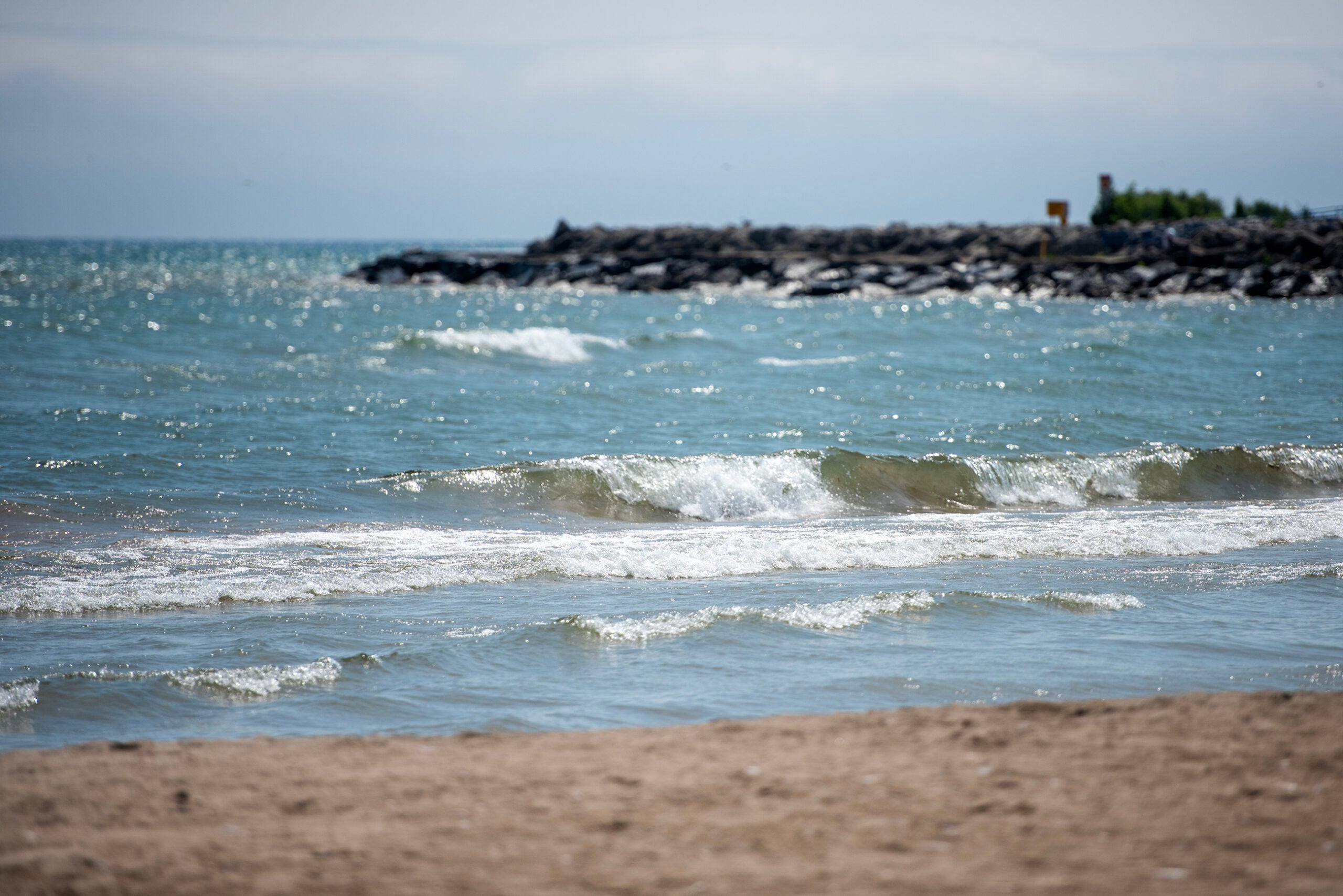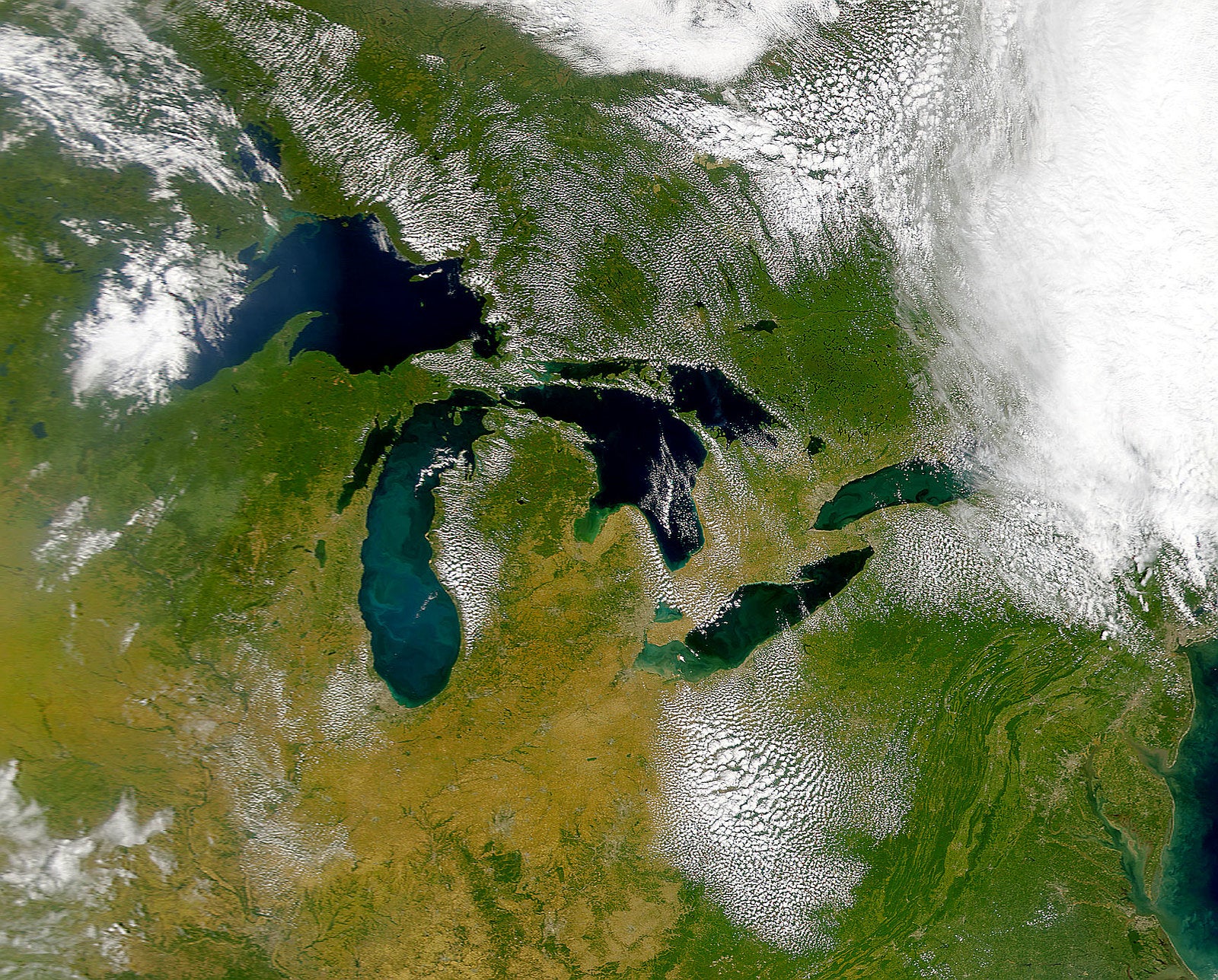Ice cover on the Great Lakes reached a record low on New Year’s Day, and open water made smooth sailing for the latest departure of an oceangoing vessel ever recorded in the Port of Duluth-Superior.
On New Year’s Day, ice cover across the Great Lakes was next to nothing, averaging less than .4 percent. That’s the lowest on record for the day spanning 50 years of data, according to James Kessler, physical scientist with the National Oceanic and Atmospheric Administration’s Great Lakes Environmental Research Lab. Kessler said around 9 percent of the lakes are typically frozen by Jan. 1.
“We’ve just had a lack of consistent cold weather,” Kessler said. “If you don’t get consistent, cold air, you’re not going to get ice formation.”
News with a little more humanity
WPR’s “Wisconsin Today” newsletter keeps you connected to the state you love without feeling overwhelmed. No paywall. No agenda. No corporate filter.
Data from the Wisconsin State Climatology Office shows the average temperature across much of the state was around 10 degrees Fahrenheit above normal in the last month. The National Weather Service in La Crosse recorded its second-warmest December on record.
In Duluth, the Canadian-flagged Nordika Desgagnes sailed out of the Twin Ports on Friday with a load of beet pulp pellets bound for Ireland. Jayson Hron, director of communications for the Duluth Seaway Port Authority, said that’s the latest departure of an oceangoing vessel since port officials began keeping records when the Great Lakes-St. Lawrence Seaway System opened in 1959. The shipping artery serves as a vital link between the Great Lakes and overseas ports.
“With the unseasonably warm December that has occurred throughout the upper Great Lakes region in particular, it definitely benefited those ships being able to move without the impediment of heavy ice cover,” Hron said.
The last time the lakes had virtually zero ice on New Year’s Day was in 2007 and 2016, when ice cover averaged 0.6 and 0.7 percent respectively. While significant, Kessler cautioned it’s just a snapshot in time, adding the data is within the margin of error.
January could still bring cold temperatures that cause the lakes to freeze. Even so, the North American Ice Service is predicting below normal ice conditions on the Great Lakes this winter.
“I think everyone’s sort of predicting — with the warm air that we’re experiencing — definitely lower than average ice cover,” Kessler said.
In 2021, only 4.4 percent of the lakes froze in January, marking the second-lowest monthly record for ice cover next to 2002. Last year, ice cover also reached a record low in mid-February at 7 percent. Kessler said mid-February to early March is usually when ice reaches its greatest extent across the Great Lakes.
The long-term average for annual maximum ice cover on the lakes since 1973 is roughly 53 percent, according to Kessler. Over time, researchers say the lakes are trending toward less ice. On average, the maximum amount of ice on the Great Lakes is dropping by about half-percent each year or 5 percent each decade.
Kessler said Lake Superior is seeing the greatest rate of loss at about 7 percent each decade, and Lake Michigan is witnessing the lowest decline at roughly 4 percent every 10 years.
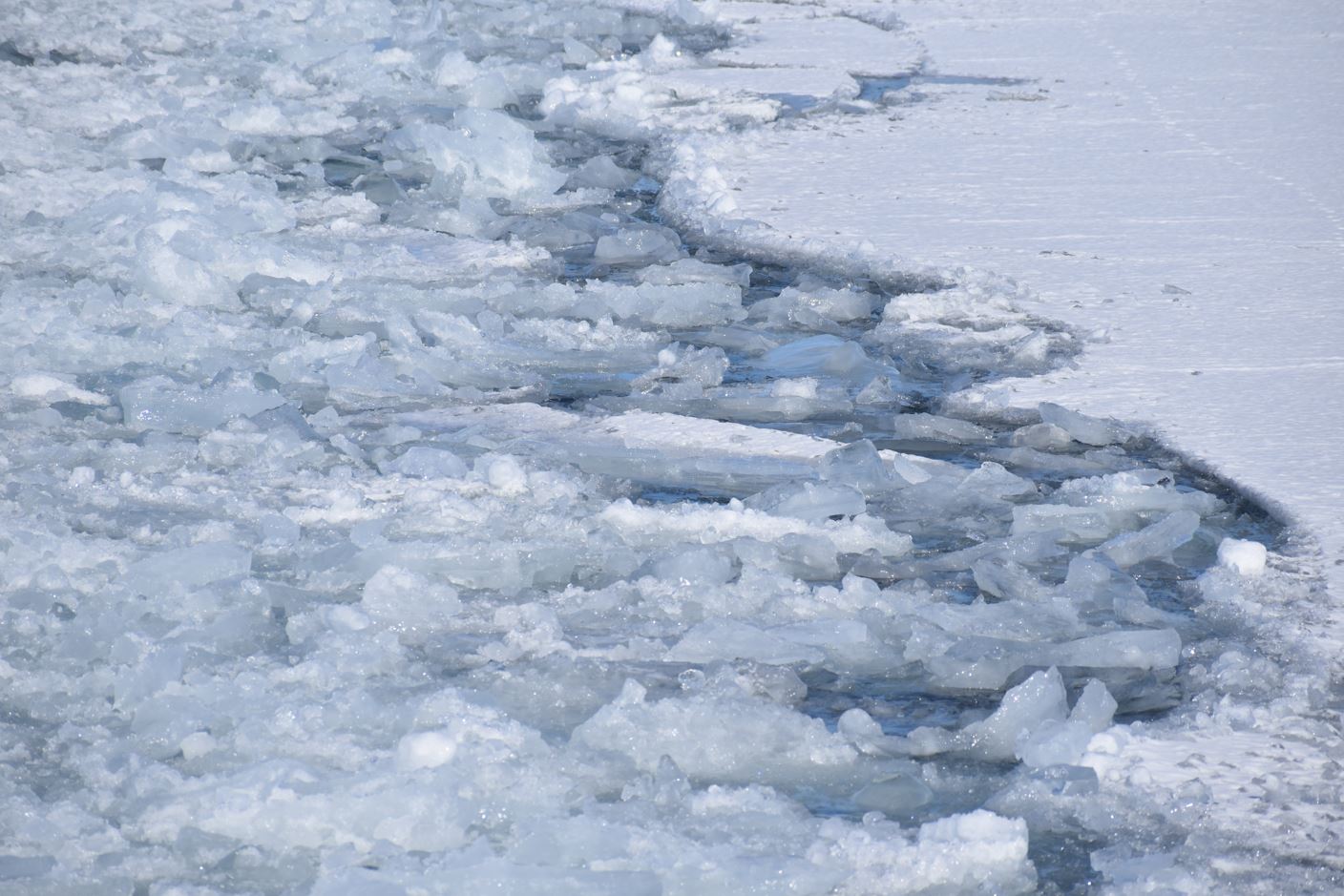
Researchers have previously found climate change is causing lakes around the world to heat up faster than the oceans. A 2015 study by more than 60 scientists found ice-covered lakes like Lake Superior are warming more rapidly than those without ice cover.
Less ice could have wide-ranging implications for things like tourism and recreation, such as ice fishing. It could also pose ecological impacts for species like whitefish that rely on ice to protect their eggs from winter storms. Researchers have also found less ice can result in more lake-effect snow. On the other hand, reduced ice cover could bring economic benefits to the Great Lakes shipping industry.
Ice coverage affects shipping season
Less ice means the lakes could see an extended shipping season. Researchers at the University of Wisconsin-Superior found there’s potential to expand shipments by water, but there’s no direct link between less ice and moving more cargo due to variation in ice cover each year.
Despite that, Hron said the lengthened season helped rally grain shipments from the Port of Duluth-Superior. Those shipments were tracking around 3 percent ahead of last year through November at nearly 580,000 tons. Last year, the port saw its lowest year for grain exports since 1890, falling to roughly 644,000 tons.
While official totals for the season aren’t yet tallied, Hron said he’s confident the port will surpass those figures after witnessing its longest navigation season for international traffic. Oceangoing vessels have had more time to ship cargoes on the Great Lakes-St. Lawrence Seaway System. Officials approved the latest season closure ever to offset the effects of a labor strike that halted shipping on the Seaway this past fall.
“It should definitely be an improvement on last year,” Hron said. “It’s still low by historical standards, but an improvement over last year. Hopefully, it’s a harbinger of good things for 2024.”
The shipping season is set to end for lake vessels transiting the Great Lakes when the Poe Lock closes at Sault Ste. Marie, Michigan, on Jan. 15.
Wisconsin Public Radio, © Copyright 2026, Board of Regents of the University of Wisconsin System and Wisconsin Educational Communications Board.
